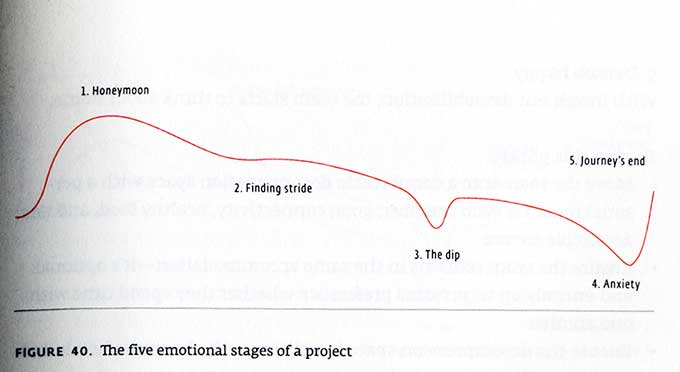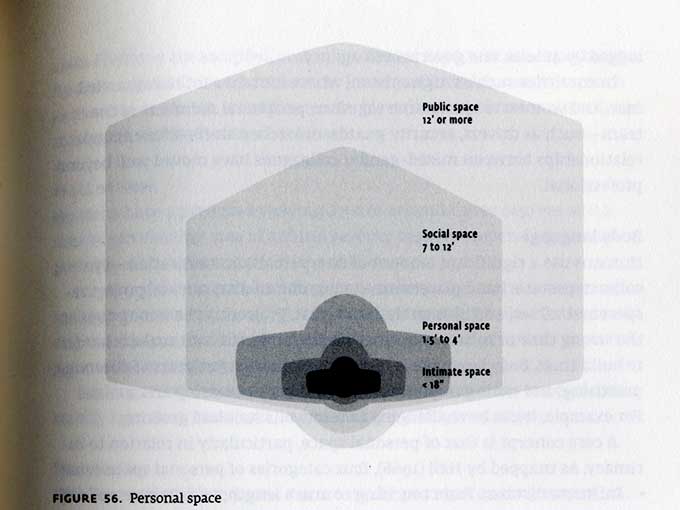Field Study Handbook

Bible for cross-culture design research
I suspect this massive heavy-duty tome will become the canonical classic reference for cross-cultural research. The book is physically built for the long-term, and will likely outlive us all. The crisp design and typography shine in timeless elegance. In 500 pages, Jan Chipchase tells you everything he knows about conducting design research in the field. He’s been the leader in this rarified discipline for decades. Let’s say you are inventing something you expect people will carry in their pocket. What else do people carry in their pockets today? What old things would a new thing sit next to in the pocket? How about in China? Where do you put it after you take it out of your pocket at the end of the day? How about in India, or Brazil? How do you even begin to answer these questions? How do you gather this kind of data responsibly? Chipchase has answers, advice, and guidelines. His lessons are comprehensive and informed by 17 years of conducting research like this in New York City, Nigerian slums, and monasteries in Nepal. As we go global, this kind of multi-discipline, multicultural research will become way more common. This will be the go-to resource. The steep price of $125 retail will be worth it for those engaged in surveying the global culture.
07/11/17Excerpt
Guest houses
Guest houses in or close to communities that represent the project’s target demographic are relatively accessible and serve as good middle ground between hotels and popup studios. The minimal cost (compared to a corporate hotel) allows the team to book extra rooms dedicated to work activities. In some smaller guest houses, it can be worth booking a couple of spare rooms to ensure the team occupies the whole building. In this scenario, the team’s working and living space effectively starts from the front door, which can create a more positive, homely feel.
*
Job description: The fixer
The fixer has a strong network in the target locale, one that bridges life-stage and ethnic boundaries, and has likely lived in the target locale for many years. She speaks the most commonly spoken local languages and dialects. The fixer is the first member of the local team to be hired. She starts by identifying suitable candidates for guides and participants, and inputs into the research protocol. An effective fixer constantly thinks one step ahead of the team. She advises the team on local cultural issues, from awareness of events that will impact the research, such as locally observed holidays, through to choosing an appropriate gift for a home visit. She identifies and helps correct the team’s inevitable breaches in local social norms and protocols.
*
Street surveys
Street surveys are a staple of marketing and trend research but are surprisingly absent from many design agencies’ research toolkits. With a clear and present focus, street surveys can efficiently reach tens or hundreds of participants and capture questionnaire, photo, video, and/or task-related data. Aside from allowing for the collection of questionnaire data, street surveys can be used to collect photos and videos of hundreds of participants. Annotating each survey form with a unique identifier (e.g., Tehran-M05) and taking a photo of that annotation is a simple way to line up form data with photos or video. The optimal location for running the survey depends on the goals of the study. Being in a high footfall area helps with potential respondents, although they need to have sufficient space to stop and engage with the researchers. For product- or task-focused activities, being in proximity of where those products are sold (e.g., outside a supermarket) or used (e.g., at the sports centre) is a natural fit. For optimal results, the street survey team needs to find a locale that provides a clear line of sight to communicate intent, and adopt a posture that encourages interaction without being overbearing. Novice researchers tend to overestimate what a respondent will expect in return for taking part in the study, and fret over what makes an appropriate reward. Having a small giveaway, such as a pen or sticker, affords the teams a degree of confidence—but the reality on the street is that a gift can cheapen the experience.
*
The dip
Small things start to niggle. Compromises that were fine earlier on in the project now start to grind. Homes, families, and things that provide comfort are missed. The team has an awareness of the deliverable deadline, but it’s not yet clear whether they’ll get there. The dip is exacerbated when the client is in-field: a lot of money has been spent but there’s little recognisable return on investment. Without clear direction, a leadership vacuum can turn the dip into a major depression. During this phase:
- Provide more personal space in the working day for the team
- Schedule time for the team to be apart, including days off
- Address the worst of the logistical issues
- Introduce exceptional places and events
- Discuss, as a team, what will make a preferred decompression space and something to look forward to
*
Always accept a drink when it’s offered, regardless of whether you plan to drink. Doing so reinforces the host/guest relationship at a time when the participant may be looking for reassurance. At the very least, let the cup touch your lips. The etiquette around toasting fellow drinkers can be complex and include various issues:
- Appropriate person to raise a glass
- Timing of the toast
- Who fills or refills the glass
- Whether it’s acceptable to refill one’s own glass
- Using one or two hands
- Relative positions of the two glasses when they touch
*
*
Punctuality
What’s considered late in one culture can be perceived as early in another. Punctuality is full of cultural assumptions. For example, when scheduling a business meeting in Germany or other monochronic cultures, being more than five minutes late can warrant communication indicating an updated arrival time. Ten minutes without notification is likely to be considered late, rude, and narcissistic. In the United Arab Emirates and other polychromic cultures, the unit of time is likely to be closer to fifteen minutes before communication is warranted, and the meeting itself is likely to be regarded as having a different, less inherent value simply because more contextual issues might take into consideration other events, such as prior meetings that have not concluded. Punctuality is so ingrained into the Japanese business psyche, and the metro is so punctual, that commuters are issued a note for their employees if a train is more than a few minutes late.
The Field Study Handbook, by Jan Chipchase, 2017, 524 pages, $125
International Amazon link











